Finding Your Way Around In An Uncertain World
Finding Your Way Around in an Uncertain World
Suppose you woke up in your bedroom with the lights off and wanted to get out. While heading toward the door with your arms out, you would predict the distance to the door based on your memory of your bedroom and the steps you have already made. If you touch a wall or furniture, you would refine the prediction. This is an example of how important it is to supplement limited sensory input with your own actions to grasp the situation. How the brain comprehends such a complex cognitive function is an important topic of neuroscience.
Dealing with limited sensory input is also a ubiquitous issue in engineering. A car navigation system, for example, can predict the current position of the car based on the rotation of the wheels even when a GPS signal is missing or distorted in a tunnel or under skyscrapers. As soon as the clean GPS signal becomes available, the navigation system refines and updates its position estimate. Such iteration of prediction and update is described by a theory called “dynamic Bayesian inference.”
In a collaboration of the Neural Computation Unit and the Optical Neuroimaging Unit at the Okinawa Institute of Science and Technology Graduate University (OIST), Dr. Akihiro Funamizu, Prof. Bernd Kuhn, and Prof. Kenji Doya analyzed the brain activity of mice approaching a target under interrupted sensory inputs. This research is supported by the MEXT Kakenhi Project on “Prediction and Decision Making” and the results were published online in Nature Neuroscience on September 19th, 2016.
The team performed surgeries in which a small hole was made in the skulls of mice and a glass cover slip was implanted onto each of their brains over the parietal cortex. Additionally, a small metal headplate was attached in order to keep the head still under a microscope. The cover slip acted as a window through which researchers could record the activities of hundreds of neurons using a calcium-sensitive fluorescent protein that was specifically expressed in neurons in the cerebral cortex. Upon excitation of a neuron, calcium flows into the cell, which causes a change in fluorescence of the protein. The team used a method called two-photon microscopy to monitor the change in fluorescence from the neurons at different depths of the cortical circuit (Figure 1).

(Figure 1: Parietal Cortex. A depiction of the location of the parietal cortex in a mouse brain can be seen on the left. On the right, neurons in the parietal cortex are imaged using two-photon microscopy)
The research team built a virtual reality system in which a mouse can be made to believe it was walking around freely, but in reality, it was fixed under a microscope. This system included an air-floated Styrofoam ball on which the mouse can walk and a sound system that can emit sounds to simulate movement towards or past a sound source (Figure 2).

(Figure 2: Acoustic Virtual Reality System. Twelve speakers are placed around the mouse. The speakers generate sound based on the movement of the mouse running on the spherical treadmill (left). When the mouse reaches the virtual sound source it will get a droplet of sugar water as a reward)
An experimental trial starts with a sound source simulating a distance from 67 to 134 cm in front of and 25 cm to the left of the mouse. As the mouse steps forward and rotates the ball, the sound is adjusted to mimic the mouse approaching the source by increasing the volume and shifting in direction. When the mouse reaches just by the side of the sound source, drops of sugar water come out from a tube in front of the mouse as a reward for reaching the goal. After the mice learn that they will be rewarded at the goal position, they increase licking the tube as they come closer to the goal position, in expectation of the sugar water.
The team then tested what happens if the sound is removed for certain simulated distances in segments of about 20 cm. Even when the sound is not given, the mice increase licking as they came closer to the goal position in anticipation of the reward (Figure 3). This means that the mice predicted the goal distance based on their own movement, just like the dynamic Bayesian filter of a car navigation system predicts a car’s location by rotation of tires in a tunnel. Many neurons changed their activities depending on the distance to the target, and interestingly, many of them maintained their activities even when the sound was turned off. Additionally, when the team injects a drug that suppresses neural activities in a region of the mice’s brains, called the parietal cortex they find that the mice did not increase licking when the sound is omitted. This suggests that the parietal cortex plays a role in predicting the goal position.

(Figure 3: Estimation of the goal distance without sound. Mice are eager to find the virtual sound source to get the sugar water reward. When the mice get closer to the goal, they increase licking in expectation of the sugar water reward. They increased licking when the sound is on but also when the sound is omitted. This result suggests that mice estimate the goal distance by taking their own movement into account)
In order to further explore what the activity of these neurons represents, the team applied a probabilistic neural decoding method. Each neuron is observed for over 150 trials of the experiment and its probability of becoming active at different distances to the goal could be identified. This method allowed the team to estimate each mouse’s distance to the goal from the recorded activities of about 50 neurons at each moment. Remarkably, the neurons in the parietal cortex predict the change in the goal distance due to the mouse’s movement even in the segments where sound feedback was omitted (Figure 4). When the sound was given, the predicted distance from the sound became more accurate. These results show that the parietal cortex predicts the distance to the goal due to the mouse’s own movements even when sensory inputs are missing and updates the prediction when sensory inputs are available, in the same form as dynamic Bayesian inference.

(Figure 4: Distance estimation in the parietal cortex utilizes dynamic Bayesian inference. Probabilistic neural decoding allows for the estimation of the goal distance from neuronal activity imaged from the parietal cortex. Neurons could predict the goal distance even during sound omissions. The prediction became more accurate when sound was given. These results suggest that the parietal cortex predicts the goal distance from movement and updates the prediction with sensory inputs, in the same way as dynamic Bayesian inference)
The hypothesis that the neural circuit of the cerebral cortex realizes dynamic Bayesian inference has been proposed before, but this is the first experimental evidence showing that a region of the cerebral cortex realizes dynamic Bayesian inference using action information. In dynamic Bayesian inference, the brain predicts the present state of the world based on past sensory inputs and motor actions. “This may be the basic form of mental simulation,” Prof. Doya says. Mental simulation is the fundamental process for action planning, decision making, thought and language. Prof. Doya’s team has also shown that a neural circuit including the parietal cortex was activated when human subjects performed mental simulation in a functional MRI scanner. The research team aims to further analyze those data to obtain the whole picture of the mechanism of mental simulation.
Understanding the neural mechanism of mental simulation gives an answer to the fundamental question of “How are thoughts formed?” It should also contribute to our understanding of the causes of psychiatric disorders caused by flawed mental simulation, such as schizophrenia, depression, and autism. Moreover, by understanding the computational mechanisms of the brain, it may become possible to design robots and programs that think like the brain does. This research contributes to the overall understanding of how the brain allows us to function.
More Posts from Smparticle2 and Others










The Landscapes and Skylines of Howl’s Moving Castle ハウルの動く城
There is a time when it is necessary to abandon the used clothes, which already have the shape of our body and to forget our paths, which takes us always to the same places. This is the time to cross the river: and if we don’t dare to do it, we will have stayed, forever beneath ourselves
Fernando Pessoa (via paizleyrayz)

Bringing silicon to life: Scientists persuade nature to make silicon-carbon bonds
A new study is the first to show that living organisms can be persuaded to make silicon-carbon bonds – something only chemists had done before. Scientists at Caltech “bred” a bacterial protein to make the humanmade bonds – a finding that has applications in several industries.
Molecules with silicon-carbon, or organosilicon, compounds are found in pharmaceuticals as well as in many other products, including agricultural chemicals, paints, semiconductors, and computer and TV screens. Currently, these products are made synthetically, since the silicon-carbon bonds are not found in nature.
The new study demonstrates that biology can instead be used to manufacture these bonds in ways that are more environmentally friendly and potentially much less expensive.
“We decided to get nature to do what only chemists could do – only better,” says Frances Arnold, Caltech’s Dick and Barbara Dickinson Professor of Chemical Engineering, Bioengineering and Biochemistry, and principal investigator of the new research, published in the Nov. 24 issue of the journal Science.
Read more.
Must return soon

Golden Gate Bridge // Geek Creative









Tuz Gölü - Cereal / WORDS & PHOTOS: Peter Edel
FOR THE AMERICAN COLOUR FIELD PAINTER BARNETT NEWMAN, THE EMPTY, BOUNDLESS LANDSCAPE ENHANCED AN INDIVIDUAL’S SENSE OF PRESENCE WITHIN THEM. THE TUZ GÖLÜ, THE SALT LAKE LOCATED IN THE CORE OF TURKEY’S ANATOLIAN PENINSULA, IS ONE OF THE PLACES IN THE WORLD WHERE THIS UNDERSTANDING IS EXPERIENCED MOST PROFOUNDLY.

Big Improvements to Brain-Computer Interface
When people suffer spinal cord injuries and lose mobility in their limbs, it’s a neural signal processing problem. The brain can still send clear electrical impulses and the limbs can still receive them, but the signal gets lost in the damaged spinal cord.
The Center for Sensorimotor Neural Engineering (CSNE)—a collaboration of San Diego State University with the University of Washington (UW) and the Massachusetts Institute of Technology (MIT)—is working on an implantable brain chip that can record neural electrical signals and transmit them to receivers in the limb, bypassing the damage and restoring movement. Recently, these researchers described in a study published in the journal Nature Scientific Reports a critical improvement to the technology that could make it more durable, last longer in the body and transmit clearer, stronger signals.
The technology, known as a brain-computer interface, records and transmits signals through electrodes, which are tiny pieces of material that read signals from brain chemicals known as neurotransmitters. By recording brain signals at the moment a person intends to make some movement, the interface learns the relevant electrical signal pattern and can transmit that pattern to the limb’s nerves, or even to a prosthetic limb, restoring mobility and motor function.
The current state-of-the-art material for electrodes in these devices is thin-film platinum. The problem is that these electrodes can fracture and fall apart over time, said one of the study’s lead investigators, Sam Kassegne, deputy director for the CSNE at SDSU and a professor in the mechanical engineering department.
Kassegne and colleagues developed electrodes made out of glassy carbon, a form of carbon. This material is about 10 times smoother than granular thin-film platinum, meaning it corrodes less easily under electrical stimulation and lasts much longer than platinum or other metal electrodes.
“Glassy carbon is much more promising for reading signals directly from neurotransmitters,” Kassegne said. “You get about twice as much signal-to-noise. It’s a much clearer signal and easier to interpret.”
The glassy carbon electrodes are fabricated here on campus. The process involves patterning a liquid polymer into the correct shape, then heating it to 1000 degrees Celsius, causing it become glassy and electrically conductive. Once the electrodes are cooked and cooled, they are incorporated into chips that read and transmit signals from the brain and to the nerves.
Researchers in Kassegne’s lab are using these new and improved brain-computer interfaces to record neural signals both along the brain’s cortical surface and from inside the brain at the same time.
“If you record from deeper in the brain, you can record from single neurons,” said Elisa Castagnola, one of the researchers. “On the surface, you can record from clusters. This combination gives you a better understanding of the complex nature of brain signaling.”
A doctoral graduate student in Kassegne’s lab, Mieko Hirabayashi, is exploring a slightly different application of this technology. She’s working with rats to find out whether precisely calibrated electrical stimulation can cause new neural growth within the spinal cord. The hope is that this stimulation could encourage new neural cells to grow and replace damaged spinal cord tissue in humans. The new glassy carbon electrodes will allow her to stimulate, read the electrical signals of and detect the presence of neurotransmitters in the spinal cord better than ever before.

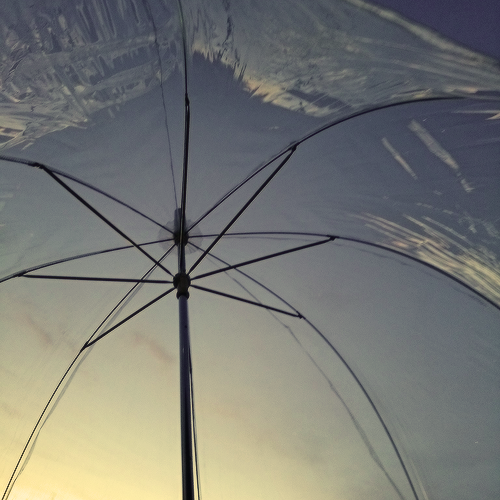


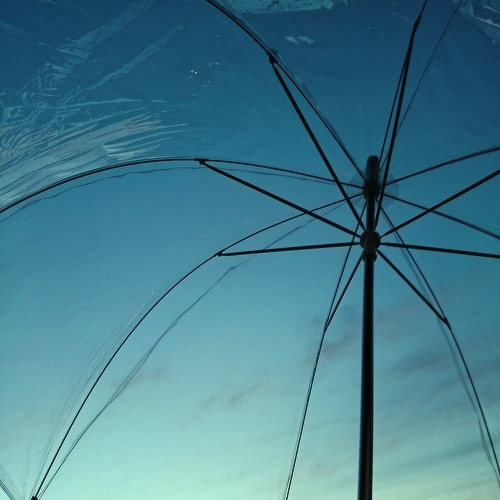

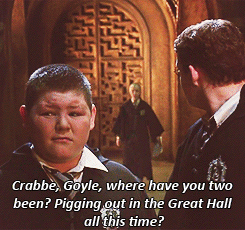
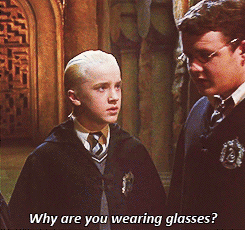
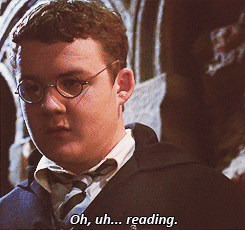


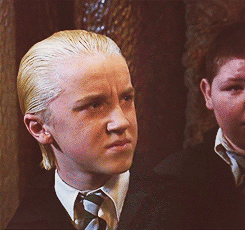






A rare screentest of Vivien Leigh and Clark Gable, just after Vivien had been announced as the official actress portraying Scarlett O’hara. A Selznick employee remembers, “Gable knew this was a woman’s picture and treated her with the utmost respect.”




-
 pleasurehunter2000 liked this · 2 years ago
pleasurehunter2000 liked this · 2 years ago -
 fresalita reblogged this · 7 years ago
fresalita reblogged this · 7 years ago -
 codedrx-blog reblogged this · 8 years ago
codedrx-blog reblogged this · 8 years ago -
 codedrx-blog liked this · 8 years ago
codedrx-blog liked this · 8 years ago -
 officialactualghost reblogged this · 8 years ago
officialactualghost reblogged this · 8 years ago -
 kronokarma liked this · 8 years ago
kronokarma liked this · 8 years ago -
 outatheaftermath reblogged this · 8 years ago
outatheaftermath reblogged this · 8 years ago -
 semakaya liked this · 8 years ago
semakaya liked this · 8 years ago -
 cerebralreservoir reblogged this · 8 years ago
cerebralreservoir reblogged this · 8 years ago -
 soicanhaveitlater liked this · 8 years ago
soicanhaveitlater liked this · 8 years ago -
 springirls-on-time reblogged this · 8 years ago
springirls-on-time reblogged this · 8 years ago -
 springirls-on-time liked this · 8 years ago
springirls-on-time liked this · 8 years ago -
 buzzedniall liked this · 8 years ago
buzzedniall liked this · 8 years ago -
 ectobuddha liked this · 8 years ago
ectobuddha liked this · 8 years ago -
 joybirds reblogged this · 8 years ago
joybirds reblogged this · 8 years ago -
 waterandfate-blog liked this · 8 years ago
waterandfate-blog liked this · 8 years ago -
 so-much-kawaiis reblogged this · 8 years ago
so-much-kawaiis reblogged this · 8 years ago -
 minigeist liked this · 8 years ago
minigeist liked this · 8 years ago -
 springirls-on-time reblogged this · 8 years ago
springirls-on-time reblogged this · 8 years ago -
 tolstoy-obsessed-blog liked this · 8 years ago
tolstoy-obsessed-blog liked this · 8 years ago -
 ughidkwhattoputasmyurl liked this · 8 years ago
ughidkwhattoputasmyurl liked this · 8 years ago -
 demisexuali-titty liked this · 8 years ago
demisexuali-titty liked this · 8 years ago -
 royalllrealllm liked this · 8 years ago
royalllrealllm liked this · 8 years ago -
 soshi4hogosha liked this · 8 years ago
soshi4hogosha liked this · 8 years ago -
 savior-dali reblogged this · 8 years ago
savior-dali reblogged this · 8 years ago -
 glitterlovingdude liked this · 8 years ago
glitterlovingdude liked this · 8 years ago -
 illkillthemtitanssir liked this · 8 years ago
illkillthemtitanssir liked this · 8 years ago -
 cornler liked this · 8 years ago
cornler liked this · 8 years ago -
 drely liked this · 8 years ago
drely liked this · 8 years ago -
 anestezizm liked this · 8 years ago
anestezizm liked this · 8 years ago -
 crimenyjusticia liked this · 8 years ago
crimenyjusticia liked this · 8 years ago -
 chippernihilist liked this · 8 years ago
chippernihilist liked this · 8 years ago -
 andtherewasmylove liked this · 8 years ago
andtherewasmylove liked this · 8 years ago -
 i-break-for-birds liked this · 8 years ago
i-break-for-birds liked this · 8 years ago